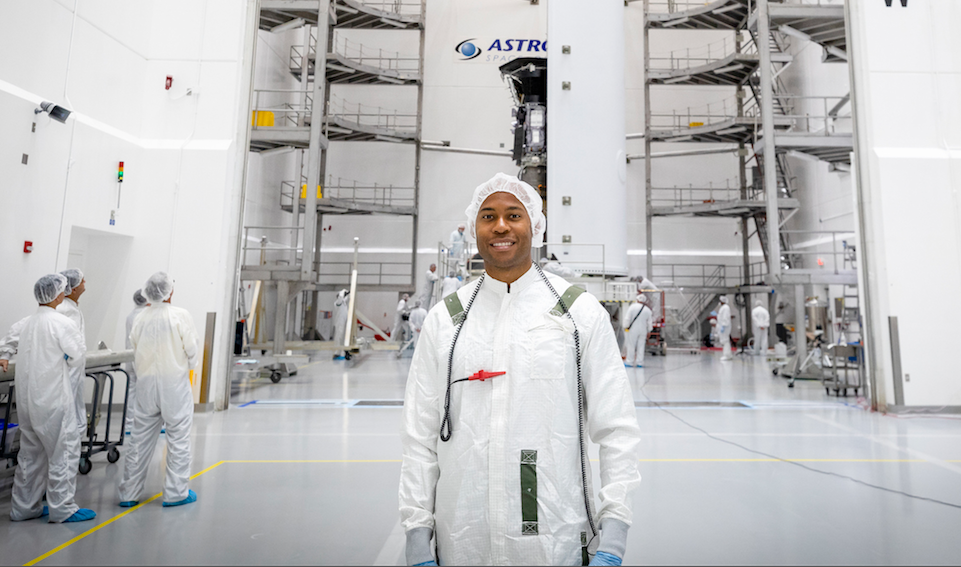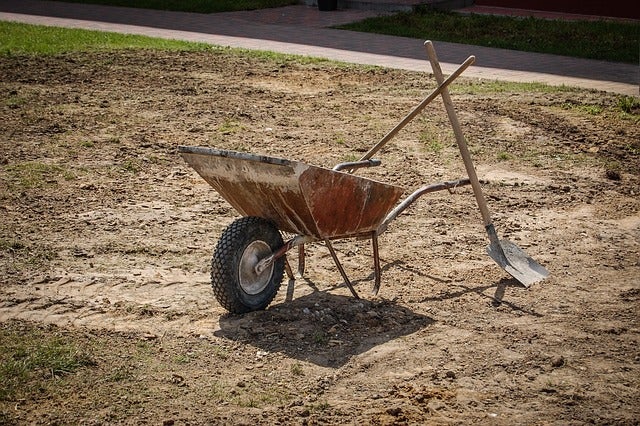‘A match made in heaven’
Published 9:06 am Wednesday, August 29, 2018

- Curtis Wilkerson, from the Town of Victoria, is pictured in front of the Parker Space Probe at Astrotec, a space craft processing facility in Florida.
Curtis Wilkerson, who grew up in Victoria, spent most of his childhood dreaming about space.
He has made his dreams a reality by working on spacecrafts, most recently as a Quality Engineer and System Assurance Manager for the recently-launched Parker Solar Probe.
His role on the Parker Solar Probe, which launched Aug. 12, was making sure that the parts of the spacecraft operated the way they needed to when they went into space.
According to the website for the spacecraft, the “Parker Solar Probe will swoop to within 4 million miles of the sun’s surface, facing heat and radiation like no spacecraft before it … Parker Solar Probe will provide new data on solar activity and make critical contributions to our ability to forecast major space-weather events that impact life on Earth.”
Wilkerson said a team of engineers designed hardware for the spacecraft and established technical requirements for it.
Wilkerson and the members of the systems assurance team, who worked out of The Johns Hopkins University Applied Physics Laboratory in Maryland, made sure the hardware meets the quality requirements.
The hardware is then tested to make sure it meets the requirements needed for space travel.
Before the spacecraft was built, he said there was a nice balance between working at a computer and traveling to contractors and subcontractors who are building equipment for the spacecraft. Once all of the parts came in, 80 percent of that day could be inside the lab working with the representatives testing the spacecraft parts.
The process to build the spacecraft and get it ready to launch took several years.
Wilkerson was born in the region, and lived in Victoria and attended Victoria Elementary School until the beginning of fifth grade, where he moved to the city of Franklin. He said he returned to Victoria around 2011 and spoke to students at the Lunenburg Middle School auditorium about his career. Wilkerson said it was very early in life when he first became fascinated by space exploration.
He carried his passion to college, where he attended North Carolina A&T State University and received a mechanical engineering degree. He later went on to receive his master’s degree in aerospace engineering from Virginia Tech. Wilkerson got the call to work at the National Aeronautics and Space Administration (NASA) at its jet propulsion laboratory in California shortly after getting his degree.
“Everything sort of came to fruition after grad school,” Wilkerson said, who described the job as “a match made in heaven.”
Though all went well, he said he had to combat with doubts and insecurities he had following graduate school, and facing this enormous job opportunity.
“There’s probably an initial fear, at least for me, there was an initial fear. It’s one thing to want to do something really good, … but do you have what it takes to do it?”
He said everything worked out, and cited his education as giving him the needed confidence to pursue his dream career with NASA at full tilt.
Wilkerson worked with the Orbiting Carbon Observatory-2 (OCO2), which launched in Florida.
He also worked at the Mars Science Laboratory on the Curiosity Rover, but transferred to work on the Juno spacecraft before the rover was launched.
He said the first spacecraft he ever worked on was the rover that is currently on the planet Mars.
He said one of the largest perks of working on spacecrafts is working with fellow engineers with a similar interest in space.
“I wasn’t like that strange kid anymore,” Wilkerson said, laughing. “Now I’m surrounded by other people who grew up as that strange kid that enjoyed space. We all found each other.”
He said there will be some in between the Parker Solar Probe project and the next project, but he said he will continue to pursue his dream, and encourages others to do the same.
“It’s a matter of finding the type of stuff that you’re interested in,” Wilkerson said. “That goes a long way in the career field.”





